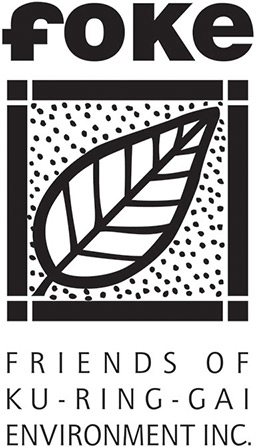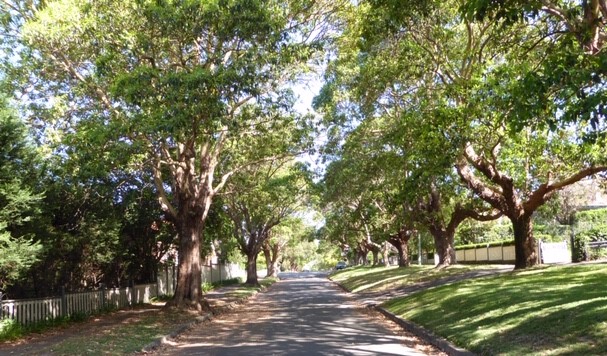Australia’s two largest capital cities have far too little tree canopy, which increases the cities’ heat island effects and leads to increased rates of obesity, depression, anxiety and heatstroke.
Continue readingDestroy Trees. Destroy Civilisation
The lessons of Easter Island seem to have been forgotten. Destroy trees. Destroy civilisation.
Continue readingNSW Labor DETERMINED TO DESTROY KU-RING-GAI

“You have something special here in Ku-ring-gai. Fight for it.” – Tom Uren
Ku-ring-gai is about to be destroyed.
It is now time for residents to fight for Ku-ring-gai.
The NSW Government is planning to destroy Ku-ring-gai – its tree canopy, its heritage homes and its character.
IT IS IMPORTANT for residents to:
a) complete a Ku-ring-gai Council online survey about their say on the planning changes
b) send feedback to the State Government’s planning department here.
THE DEADLINE IS FRIDAY 23 FEBRUARY, 2024.
The NSW Government proposes dual occupancies in low density residential zones on block sizes of 450sqm. A block of 900 sqm will allow four homes to be built on it.
The NSW Government’s blanket zonings will allow terraces, townhouses, manor houses (two storey apartment blocks) and 6 to 7 storey mid-rise apartment blocks to be built within walking distance of railway stations. Possibly too for Ku-ring-gai’s local centres – East Killara, East Lindfield, West Gordon, West Pymble, West Lindfield, South Turramurra, North Turramurra?
Ku-ring-gai’s future will be dramatically different – traffic congestion, high rise with the removal of thousands of trees. Heat stress turbocharged. Wildlife extinguished. Heritage erased.
In April 2024 the NSW Government plans to implement ‘Transport Oriented Development’ (TOD).
TOD allows blanket 6 to 7 storey unit developments within 400m of the Roseville, Lindfield, Killara and Gordon railway stations. Eight to nine storeys will be allowed if developers provide “affordable housing”.
Heritage Conservation Areas WILL NOT BE PROTECTED.
The NSW Government has indicated it will NOT CONSULT Ku-ring-gai residents over its TOD high rise rezoning changes.
For more information see Ku-ring-gai Council: ‘Proposed changes to NSW housing policy and its impacts on Ku-ring-gai’.
NSW Government announces intentions for MORE HOUSING DENSITY
At the last Ku-ring-gai Council meeting, less than two weeks before Christmas 2023, Mayor Ngai tabled a Mayoral Minute : “The Trickle of Information Regarding Housing Density Changes – Tuesday 12 December 2023”about the State Government’s intentions for more housing density for Ku-ring-gai.
Below is FOKE’s summary of the Mayoral Minute. The full Mayoral Minute can be read here.
The State Government intends to legislate two State Environmental Planning Policies (SEPPs) to override Ku-ring-gai Council planning controls.
1. SEPP relating to “diverse and well-located homes”
The NSW Government has announced it intends to legislate new planning controls to allow terraces and townhouses from being built in R2 Low Density Residential zones and residential flat buildings (apartments) to being built in R3 Medium Density Residential zones.
This would shift the goalposts with unintended consequences on infrastructure, planning, and biodiversity.
It is understood that if this “diverse and well-located homes” SEPP is legislated by the NSW Government it will:
• increase housing density within 800m walking distance to a well-located area’, ie close to existing train stations and town centre precincts (it remains unclear as to whether local neighbourhood centres will be includes)
• Multi-dwelling houses to be allowed in R2 zones within 800m walking distance of well located areas
• 6 storey apartments to be allowed in R3 zones within 400m walking distance of well located areas
• 3 storey apartments to be allowed in R3 zones within 800m walking distance of well located areas and
• Dual occupancies to be allowed anywhere else in NSW zoned R2.
A letter sent to Ku-ring-gai Council from the Department of Planning on 16th July 2021, indicates it wants Council to implement ‘medium density’ (then townhouses) in Roseville, Roseville Chase, Killara, Pymble, Wahroonga, West Gordon and North St Ives.
2. SEPP relating to “transport oriented development”
• The SEPP intends to allow 6 storey apartments on any zoned land within 400m of each train station, although it has not been confirmed whether this is 400m walking distance or 400m radius
• The planning controls will allow building heights of 6 storeys (21m) with a floor space ratio of 3:1
• New parking rates will apply
• No minimum lot size or lot width rules will apply and developments in commercial areas must make sure street frontages are activated
• The State Government does not believe further support for infrastructure is necessary
• The SEPP will apply to Heritage Conservation Areas, although details on this remains unknown
• The SEPP will designate each area as “special entertainment precincts” with venues trading later and exempt from normal rules about amplified music.
Ku-ring-gai Council has responded with concerns about:
• The lack of consideration for infrastructure (transport, stormwater, education and recreation)
• The significant loss of tree-canopy, which is vital to protecting biodiversity as well as to support climate-change resilience
• The potential impacts to the character of Sydney, including impacts to our Heritage Conservation Areas
• The lack of detail publicly available on either SEPP
• The perceived rush to implement each SEPP
• The perceived lack of public consultation regarding the above.
The situation is compounded by the State Government’s withdrawal of $9.8m funding for the Lindfield Village Hub commuter carpark, which has put the project in jeopardy, delayed the delivery of housing, and sabotaged the good faith efforts of both Council and the potential developer.
Recommendation:
A. That Council notes this Mayoral Minute, awaits the release of detail on each SEPP, and continues to voice its concerns both individually and in co-operation with other local councils and industry bodies such as LGNSW and NSROC.
B. That as soon as practicable after the public release of detailed information on each SEPP, Council will inform the residents of the impacts of proposed changes as well as any public feedback or consultation mechanisms available to them. Council will also respond as necessary to protect the interests of current and future residents of Sydney.




